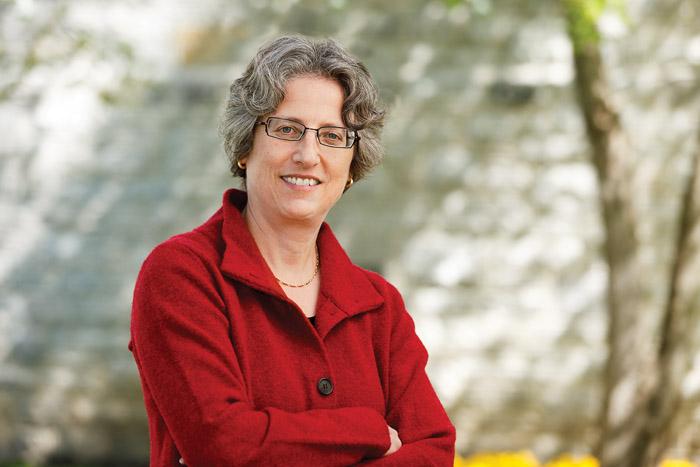Dickinson Matters: Diverse Communities, Common Purpose

Photo by Carl Socolow '77.
Nancy A. Roseman, president
Our students mirror the broader world they eventually will enter. This can be seen in their rich and diverse representation of race, ethnicity, socioeconomic status, religious and political beliefs, sexual orientation and gender presentation. As members of the class of 2018 begin their journeys as Dickinsonians, it is exciting to note that over 18 percent are domestic students of color and over 10 percent are international students. To put this in perspective, just five years ago, the entering class included only 13 percent students of color and 6 percent international students.
A tangible example of how this increase in diversity affects our students came when we looked at the composition of First-Year Seminars (FYS). Each seminar has no more than 16 students. Among those 16 are, on average, four to six students of color and one to three international students. The FYS is a clear example of our commitment to small class size within a global context and to the fostering of mentoring relationships with faculty from day one.
On an intimate college campus full of young people who often are experiencing their first time away from the familiar, many aspects of diversity can be challenging, but navigating socioeconomic difference can be particularly discomforting. Our increase in financial-aid spending means we have an increasingly wide range of voices from across the socioeconomic spectrum, and regardless of how much a family is able to contribute financially to a student’s education, every student on our campus must feel part of this community—socially and intellectually. Economic disparity is something we must address head-on in our community.
At Dickinson, we encourage our students to explore and understand themselves and others through student organizations, athletics, study-abroad programs, social and service activities and, of course, their academic work. The college’s diversity team—through the newly named Popel Shaw Center for Race, Ethnicity & Class; the Office of Community Service & Religious Life; the Asbell Center for Jewish Life; the Women’s & Gender Resource Center; and the Office of LGBTQ Services—focuses its efforts on all aspects of the human experience.
In a world where religious differences are too often polarizing, at Dickinson our differences enrich the student experience through groups such as Dickinson Christian Fellowship, Hillel, Muslim Students Association, Newman Club and Secularist Students United. And in a world where the political landscape is deeply polarized as well, Dickinsonians practice the art of engaged listening, civility and collaboration through activities sponsored by organizations like College Democrats, College Republicans, Students for Social Action and Sustained Dialogue. This is just a sample of the many student groups that, through their activities and programming, regularly bring our community together as part of a healthy process of self-discovery and then share those discoveries with others. Being stretched by being exposed to the unfamiliar is at the core of our mission. Our increased diversity, no matter how you define it, makes that possible.
With every new class, we bring together a rich mix of people who interact with, engage with, challenge and learn about one another. This interaction is not limited to the classroom—it takes place in the Dining Hall, in the fitness center, in the residence halls or while sitting in our iconic red chairs all over campus. Additionally, there are hundreds of caring adults, our faculty and staff, who help our students move beyond their comfort zones in a safe and supportive environment that allows them to grow into the engaged citizens the future needs.
In short, Dickinsonians are comfortable with being uncomfortable. And that is something that will allow our graduates to live their lives with confidence and purpose. Today, employers are seeking employees who are able to seamlessly transition into new settings, work with colleagues and customers different from themselves and be integral parts of a diverse community with a common purpose. This is where Dickinson excels.
Read more from the fall 2014 issue of Dickinson Magazine.
Learn More
Published November 5, 2014